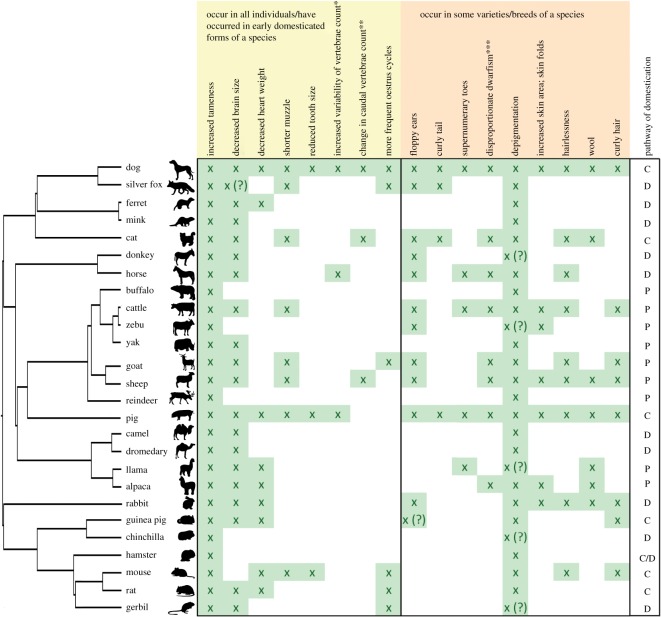Figure 1.
Occurrence of features of the ‘domestication syndrome’ in domesticated mammals ([29,30] and references therein) [33–36] and the hypothesized mode of domestication for them [2,31]. The mode of domestication can be of different kinds: along the (i) ‘commensal’ pathway, animals are attracted to and taking advantage of elements of the human niche and subsequently develop social and/or economic bonds with humans. The ‘prey’ and ‘directed’ pathways, on the other hand, are initiated by humans. The species undergoing the (ii) ‘prey’ pathway are usually prey species which are domesticated following continuous stages of game management strategies, herd management strategies, and controlled breeding. The (iii) ‘directed’ pathway is an immediate and fast way of domestication, using established knowledge about previous domestication processes (reviewed in [37]). We refer here to traits hypothesized to have been fixed in the initial process of domestication, and not to ‘improvement traits’ [2,38] present only in a proportion of domesticates. The length of the branches is proportional to time of divergence, based on conservative estimates for the divergence among species from different sources [39–43]. A test for the presence of a phylogenetic signal [44,45] for each feature was performed using the Mesquite software [46]. Of the characters hypothesized to have occurred in early domesticated forms, only ‘more frequent oestrus cycles’ shows phylogenetic signal which is statistically significant. C, commensal; D, directed; P, prey pathways; asterisks indicate: ‘*’, thoracic, lumbar; ‘**’, increase or decrease; ‘***’, relatively short limbs.

